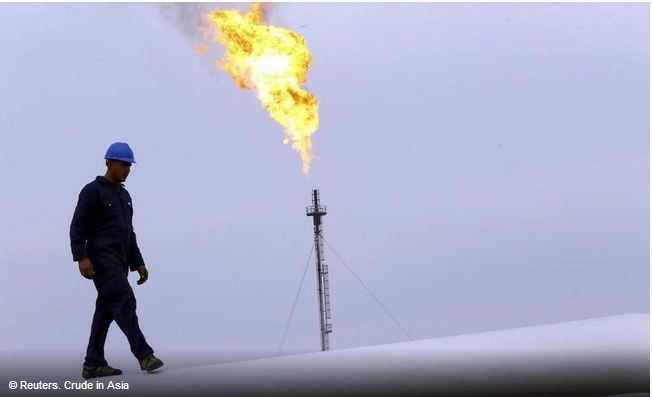Crude prices pointed weaker in early Asia on Monday with China GDP ahead and tensions on the Korean peninsula a key focus for the market.
On the New York Mercantile Exchange crude futures for May delivery were last quoted down 0.38% to $52.98 a barrel. On London’s Intercontinental Exchange, Brent was last quoted at $55.64. Major markets were shut on Good Friday, while markets in Australia, Hong Kong and New Zealand are shut for Easter Monday.
Ahead, China reports first quarter GDP with a 1.6% gain seen quarter-on-quarter and a 6.8% pace seen year-on-year. As well in China, industrial production for March is seen up 6.3% year-on-year and retail sales expected to post a 9.6% increase.
Last week, crude settled higher on Thursday, after the International Energy Agency (IEA) said the oil demand and supply imbalance was close to break-even, after several developed countries reined in production.
The IEA said the global oil market is close to balance, after three years of excess supply, as oil stockpiles across The Organization for Economic Cooperation and Development (OECD) countries fell by 17.2 million barrels in March.
The drop in production, resulted in a marginal increase of 38.5 million barrels for the first quarter of the year.
“The net result is that global stocks might have marginally increased in the first quarter, versus an implied draw of about 0.2 million barrels per day,” the IEA said.
The bullish comments from the IEA came a day after the Organization of the Petroleum Exporting Countries’ (OPEC) new monthly report on Wednesday, revealed its members cut oil output in March more than anticipated.
Meanwhile, oilfield services firm Barker Hughes reported its weekly U.S. rig count rose by 11 to 683, it was the thirteenth straight weekly increase.
Crude prices have notched three straight weeks of gains to recover from the slump in March, when prices fell to a four-month low of $47.01, on the back of concerns that a ramp up in U.S. oil production would dampen OPEC’s efforts to drain the glut in supply.
In November last year, OPEC and other producers, including Russia agreed to cut output by about 1.8 million barrels per day (bpd) during the first half of this year.
Recently, OPEC members including Saudi Arabia have expressed a desire to extend the global deal to cut oil supply for an additional six months beyond June.

























































